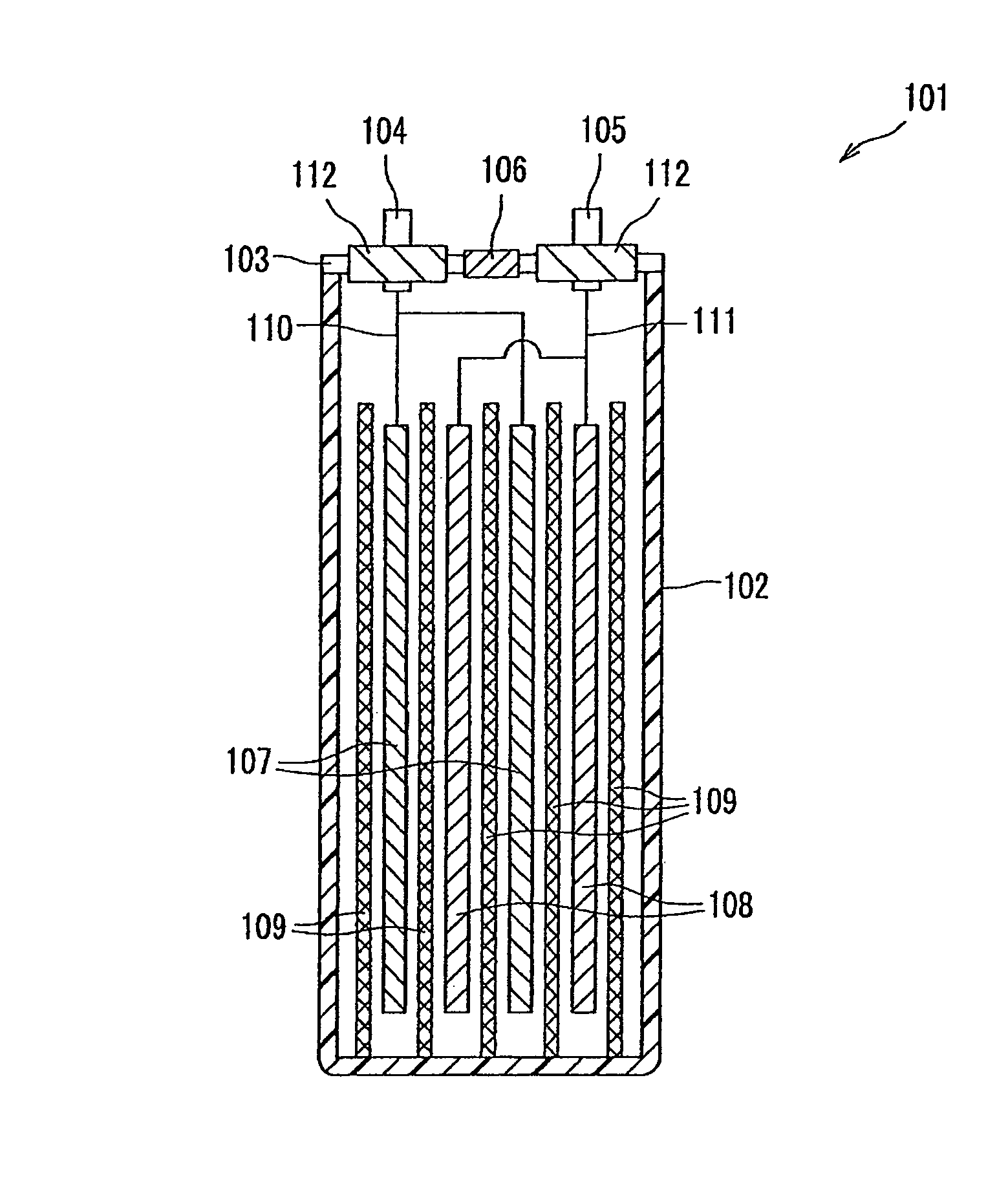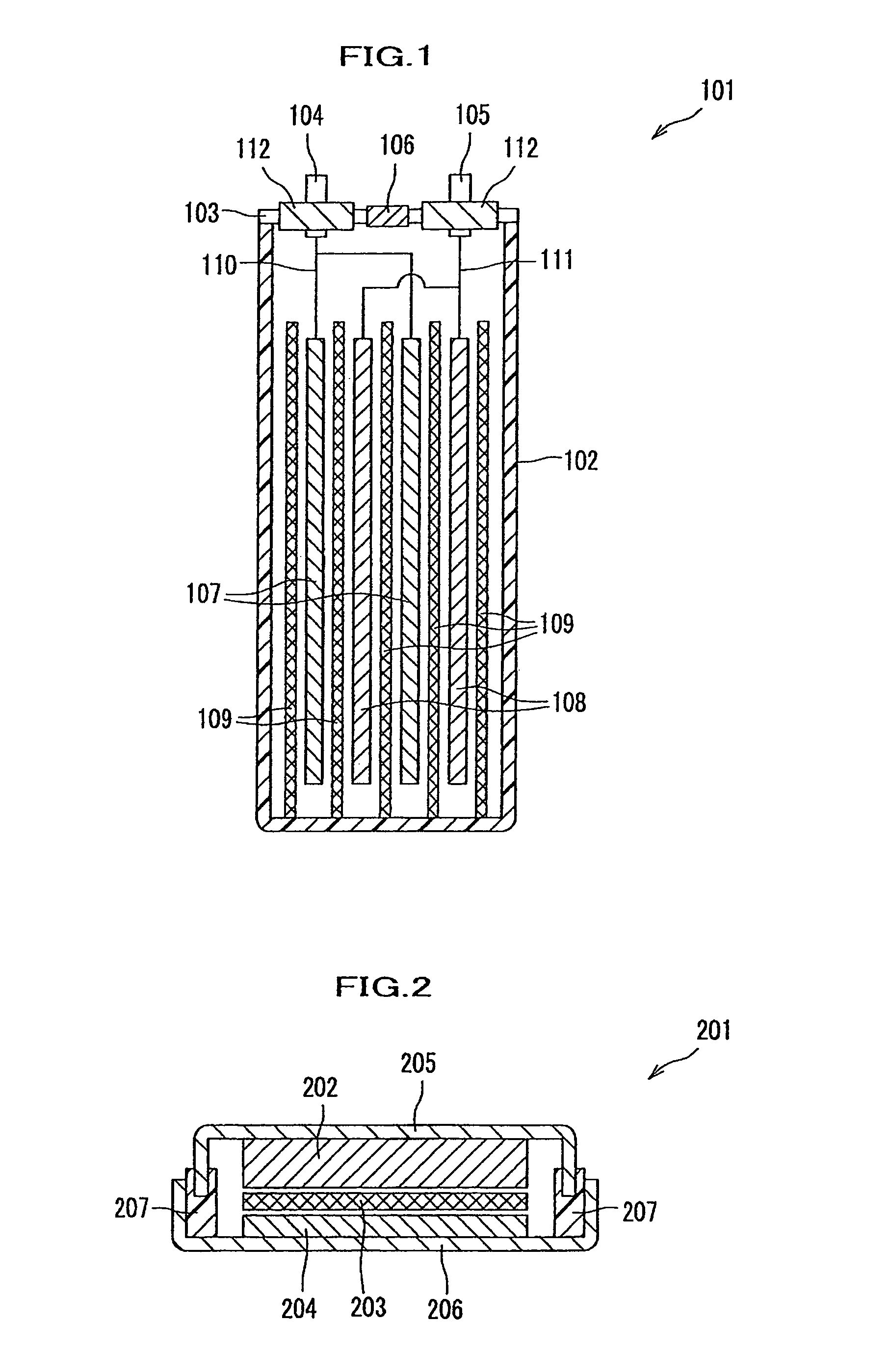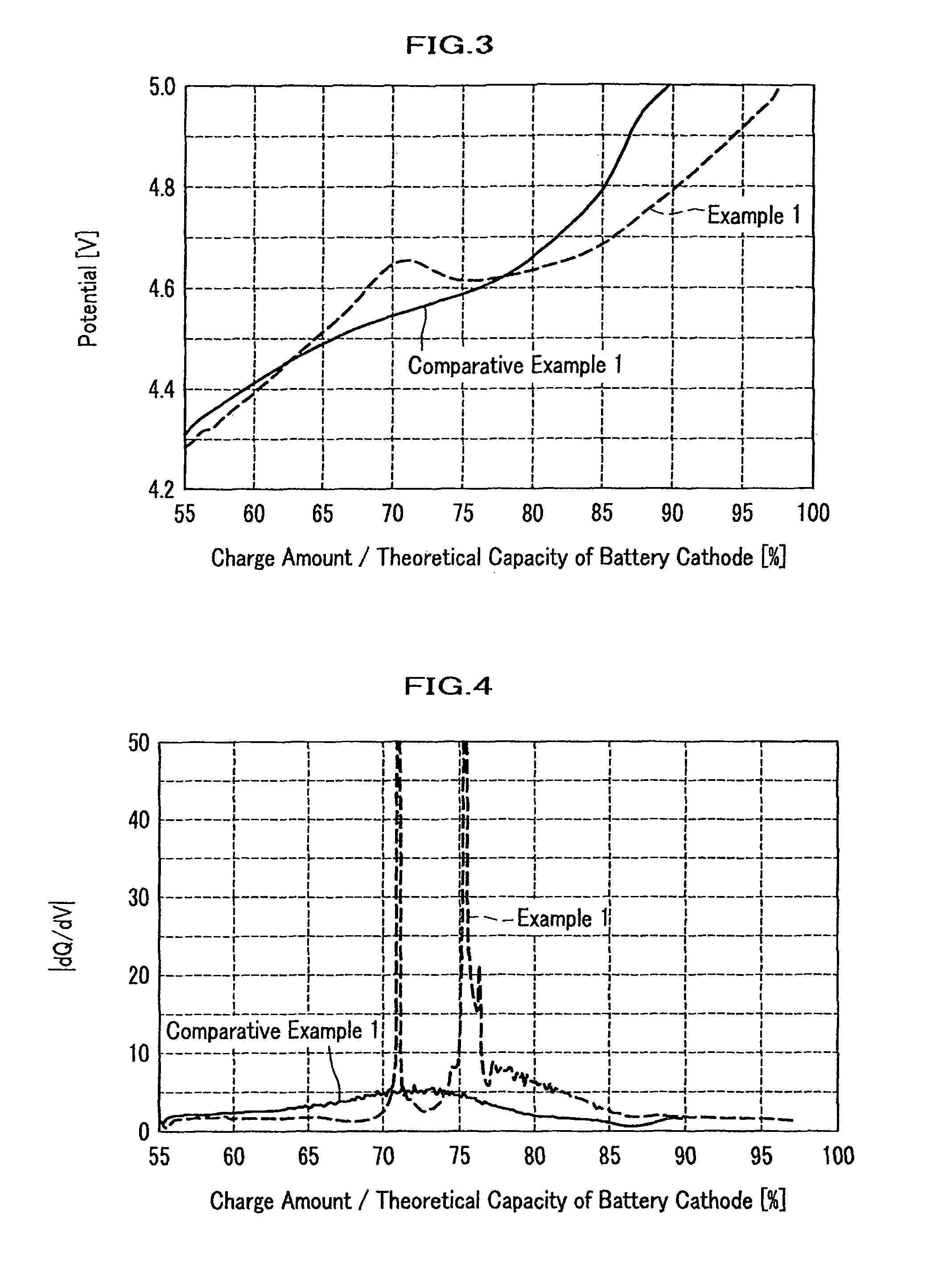Nonaqueous electrolytic solution and nonaqueous electrolyte secondary battery using the same
a nonaqueous electrolyte and secondary battery technology, applied in the direction of non-aqueous electrolyte cells, electrochemical generators, transportation and packaging, etc., can solve the problems of rapid exothermic reaction, overcharge of batteries, and spoilage of battery safety, so as to effectively suppress increase the internal resistance of batteries. , the effect of reducing the overcharge of batteries
- Summary
- Abstract
- Description
- Claims
- Application Information
AI Technical Summary
Benefits of technology
Problems solved by technology
Method used
Image
Examples
example 1
[0133]Diethyleneglycol monobiphenyl ether acrylate (5.0 g), which is an ethoxylated biphenyl acrylate (EO=2 mol), was weighed and placed in a two necked egg-type flask (50 ml) equipped with a thermometer, a reflux condenser, and a stirrer. Then, into the flask, was added azobisisobutyronitrile (AIBN: 50 mg) as a polymerization initiator. Then, after adding dimethyl carbonate (DMC: 20 g) into the flask, the oxygen gas in the flask was removed by an argon gas. The resulting mixture was heated in the oil bath at 65° C. bubbling with an argon gas for 3 hr.
[0134]After completing the reaction, cold methanol (30 ml) was gradually added to the reaction mixture with stirring, whereby precipitates were formed. Then, the obtained precipitates were washed several times by cold methanol, to remove the non-reacted monomer and the additive agent, whereby a solid polymer was obtained. The obtained polymer after washing was dried under a reduced pressure at 60° C. to remove methanol, and further dri...
example 2
[0159]The polymer (II) represented by the following formula (5) was prepared as in Example 1, except that 4-cyclohexylphenol and diethylene glycol monocyclohexylphenyl ether methacrylate (corresponding to ethylene oxide 2 mol additive) were used as the materials. Table 1 shows the yield of the polymer (II) and the number average molecular weight Mn thereof measured as in Example 1.
[0160]
[0161]Further, the electrolytic solution (II) was prepared as in Example 1, except that the polymer (II) was used instead of the polymer (I). Then, various evaluations of the battery using the electrolytic solution (II) were conducted. Table 2 shows the results.
example 3
[0162]The polymer (III) represented by the following formula (6) was prepared as in Example 1, except that 4-phenylbenzoic acid and 4-phenylbenzoic acid diethylene glycol monoallyl ether (corresponding to ethylene oxide 2 mol additive) were used as the materials. Table 1 shows the yield of the polymer (III) and the number average molecular weight Mn thereof measured as in Example 1.
[0163]
[0164]Further, the electrolytic solution (III) was prepared as in Example 1, except that the polymer (III) was used instead of the polymer (I) and the final concentration of the polymer (III) in the electrolytic solution (III) was set in 4%. Then, various evaluations of the battery using the electrolytic solution (III) were conducted. Table 2 shows the results.
PUM
| Property | Measurement | Unit |
|---|---|---|
| voltage | aaaaa | aaaaa |
| operating voltage | aaaaa | aaaaa |
| standard voltage | aaaaa | aaaaa |
Abstract
Description
Claims
Application Information
 Login to View More
Login to View More - R&D
- Intellectual Property
- Life Sciences
- Materials
- Tech Scout
- Unparalleled Data Quality
- Higher Quality Content
- 60% Fewer Hallucinations
Browse by: Latest US Patents, China's latest patents, Technical Efficacy Thesaurus, Application Domain, Technology Topic, Popular Technical Reports.
© 2025 PatSnap. All rights reserved.Legal|Privacy policy|Modern Slavery Act Transparency Statement|Sitemap|About US| Contact US: help@patsnap.com



